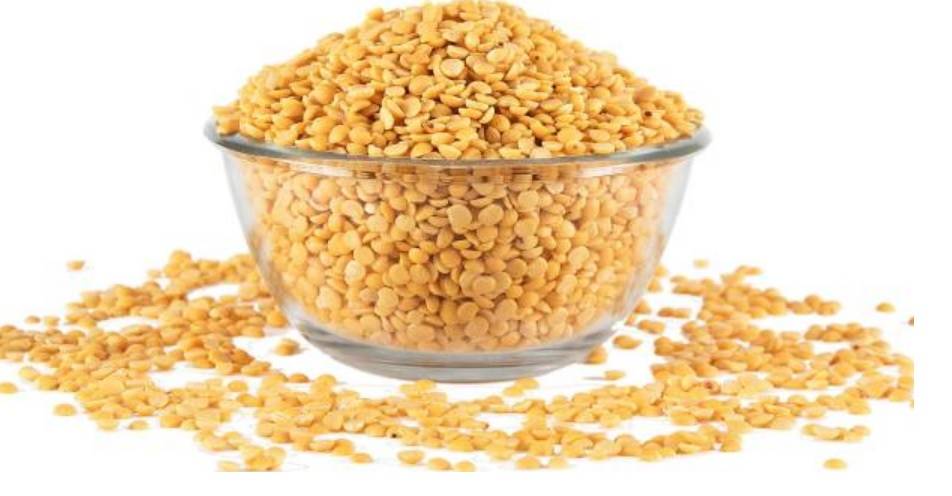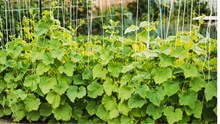
Pigeon Pea, scientifically known as Cajanus Cajan, belongs to the widespread family of pulses. It differs in size and color across various vegetation belts of the country. Mostly, it is oval in shape and white, brown, red, greyish or purplish in color with a white hylum.
In India, Pigeon Pea is popularly known as Arhar or Red Gram. Split pigeon peas (toor dal), being an important source of protein in a most of the vegetarian diet. It's fresh young pods are eaten as a vegetable in the regions where it grows.
Different Names:
-
English: Pigeon Peas ,Red Gram, Yellow Lentils.
-
Hindi: Arhar, Tuvar, Toor, Tur dal
-
Tamil: Tovarum Paruppu
-
Telugu: Kandi Pappu
Desirable Climate:
-
Pigeon Pea or Toor Dal crop needs an average rainfall of 600-650 mm with moist conditions for the first 8 weeks and drier conditions during flowering and pod development stage. Rainfall during the flowering stage of crop results in poor pollination as this crop grown successfully in summer, rainy and winter season, April-Summer, June-Kharif or rainy, September-Rabi or winter season.
-
As arhar requires a moist and warm weather i.e. 30- 35 degree celsius during the time of germination and slightly less temperature (20 -25 degree celsius) during active vegetative growth. Also during the time of flowering and pod setting it needs 15-18 degree celsius temperature and at maturity it requires much higher temperature of around 35- 40 degree celsius.
-
Heavy rainfall, water logging and frost are very much harmful to the crop. Hailstorm or rain at maturity destroy the entire crop. Pigeon Pea has a good drought tolerant capacity bacause of it has deep tap root system.
Soil Requirement
Pigeon Pea thrives well on all types of soils but loam to sandy loam soil is desirable. This crop also grows well in sloppy lands in the mid-hills. It can also be grown successfully on neutral soils having a pH value of 6.5 to 7.5. Remember there would not be any water logging in the field.
Preparation of Soil:
-
Being a deep rooted crop, Red gram responds well to proper tilt. That's why land is prepared by at least one ploughing during the dry season followed by 2 or 3 harrowings and disc ploughing.
-
Before sowing, organic manure may be applied 2-4 weeks.
-
To avoid water stagnation, oil should be well leveled.
-
Contour broad-beds and furrows or a ridge-and-furrow system are helpful in prevention of water logging.
-
Weeds should be removed properly, well-tilled and crusting should be avoided by mechanical means. A light irrigation helps in seedling emergence.
Treatment of Seed
-
Treat seeds with Carbendazim or Thiram @ 2 g/kg of seed 24 hours before sowing or Pseudomonas fluorescens @ 10 g/kg seed.
-
After treating seeds of required variety, having high germination and high real value should be selected for sowing.
-
These seeds should not be more than 2 season old. It should be prepared during the previous season.
-
Use good quality bolder seeds for better germination and quality seedlings.
-
Traditionally, pigeon pea is a Kharif crop sown in June-July with onset of Monsoon in various agro-climatic zones of the country.
-
Planting of early pigeon pea before the onset of monsoon in the month of June is suggested for higher crop yields.
In irrigated condition this crop should be sown by giving one pre-monsoon irrigation at least a fortnight earlier than the first shower so that plants can grown well during rainy season, however, under rain fed conditions the sowing may be done immediately after rains have began. Therefore, in no way the sowing should be delayed beyond last week of June.
Spacing of Plants
-
The long duration variety of pigeon pea that is tall, spreading and occupy the field for about 250-270 days should be planted at wider row with spacing of 90-120 cm and about 30 cm between the plants especially under rain-fed situations.
-
While under irrigated conditions, early maturing varieties are planted at a row spacing of 50-75 cm and plant to plant spacing must be 15-20 cm.
-
During April month, planted pigeon pea, a row spacing of 90-120 cm is suggested as the vegetative growth is much higher than June planted pigeon pea.
-
In black soil, spacing of 90 x 20 cm is advised whereas for red soils spacing should be 60 x 20 cm.
Intercropping
-
Intercropping can be defined as growing of two or more crops of varied growth patterns on the same piece of land, with the aim to optimize the total yield and net profits per unit area. Generally, red gram is intercropped with cereals, short-duration grain legumes (pulses), oilseeds, or cotton.
-
Furthermore, mostly red gram is intercropped with cereal crops like Sorghum, maize, pearl millet, finger millet etc. Red gram- Oilseed intercropping is becoming more popular nowadays and groundnut, soybean, and sesame are the oilseed crops. Red gram can also be intercropped with short-duration pulse crops like mung bean, black gram, chickpea etc.
Weed Control
-
During their early growth period of 45- 50 days, pigeon pea grows very slowly and it makes pigeon pea less competitive with weeds. That's why if the weeds are not controlled within time, it can cause up to 90% reductions in the yield of seed.
-
Therefore, it is suggested to keep the fields free from weeds. For achieving weed free field, we have to do two hand weeding once about 25-30 days and another about 45-50 days after sowing the crop.
Harvesting and Storing
-
In Toor Dal Farming, Green pigeon pea pods are harvested for different purposes. Fully developed, bright green seed is selected as a vegetable. Therefore, pods should be harvested just before they start losing their green color. To do this, generally hand picking option is used.
-
Unlike other crops, pigeon pea leaves, remain green when the pods are ready for harvest. Sometimes this is very confusing for farmers to decide on optimum harvest time. Pigeon pea must be harvested when 75-80% of the pods turn brown and are dry to reap its benefits. During bad-weather condition, delayed harvesting, may increase the risk of damage to mature seed.
-
In traditional times, pigeon pea plants are harvested by cutting the stem at the base with a sickle, but with the passage of time, machines are used for cutting and followed by drying and threshing nowadays. The harvested plants are bundled together and placed upright to dry for a week depending on the weather situation. Pods and grain are set apart by beating the dry plants with sticks or by using a thresher machine. Earlier, this seed separation was done by cattle trampling.
We can store pigeon pea for longer periods to ensure the continuous availability of whole seed at the time of sowing and as a dhal to meet consumer requirement.
















